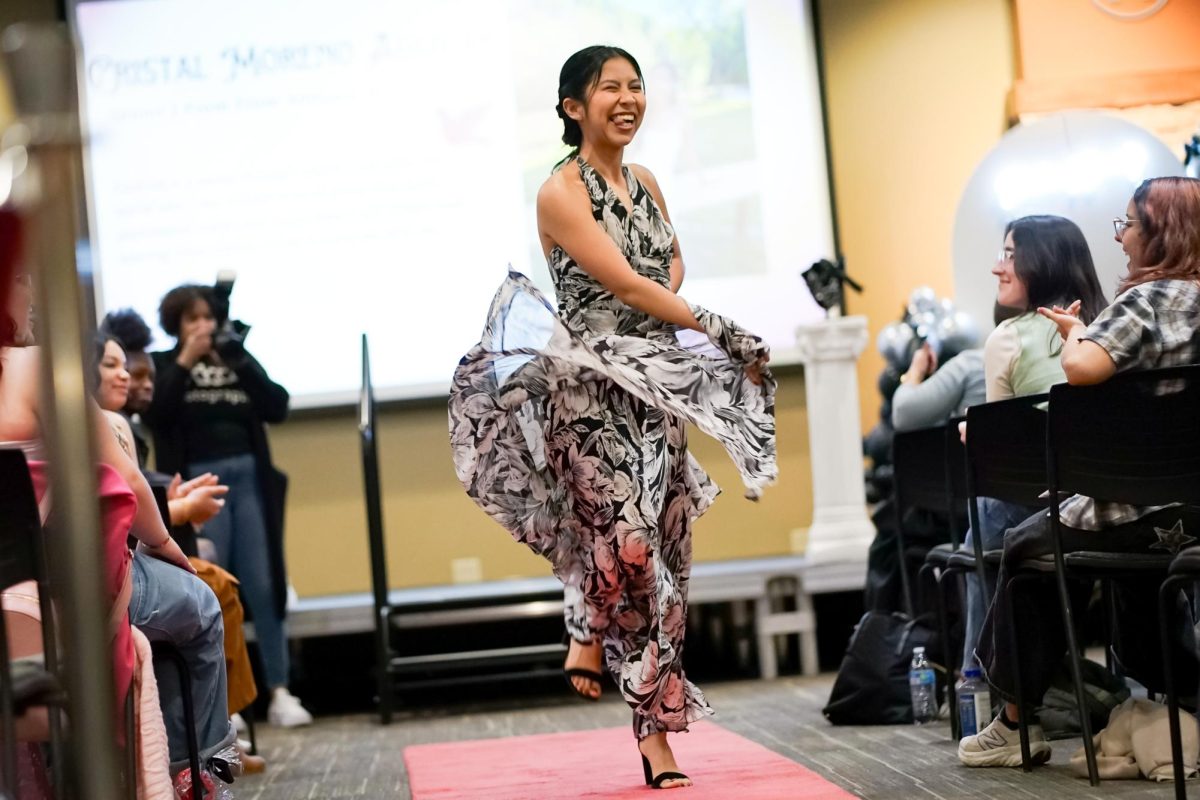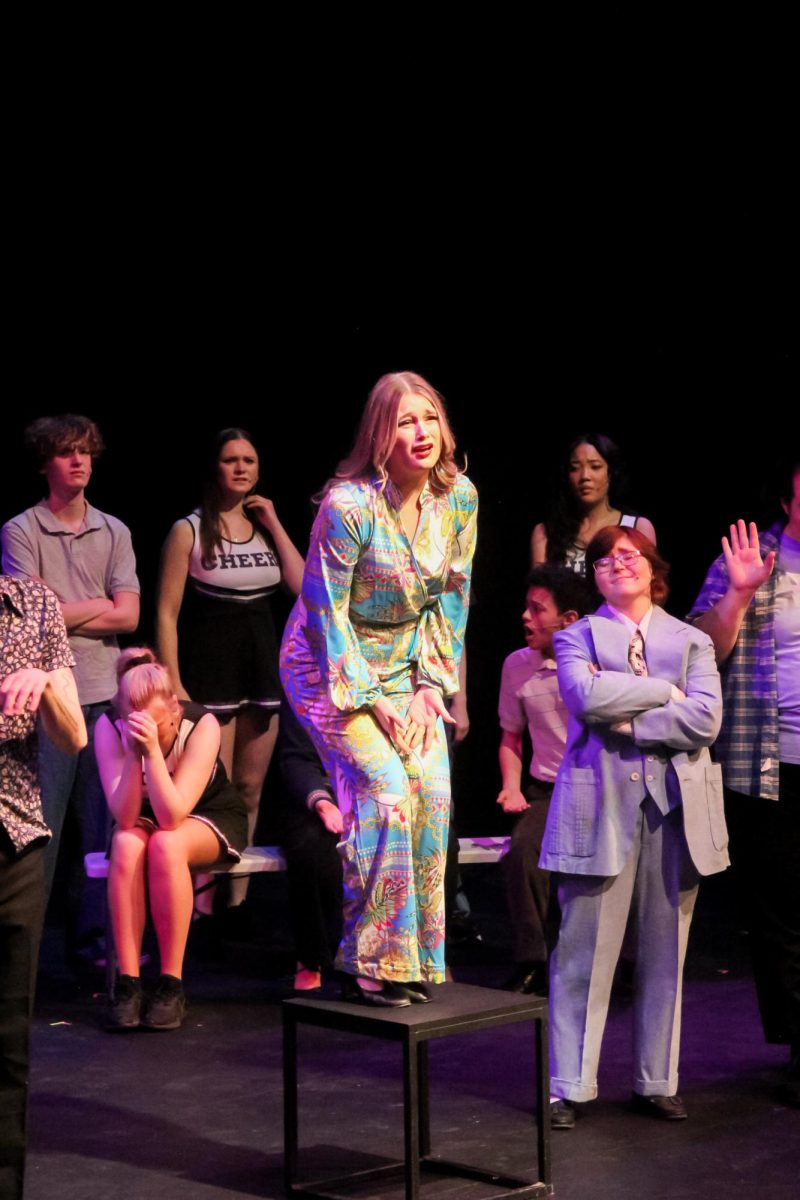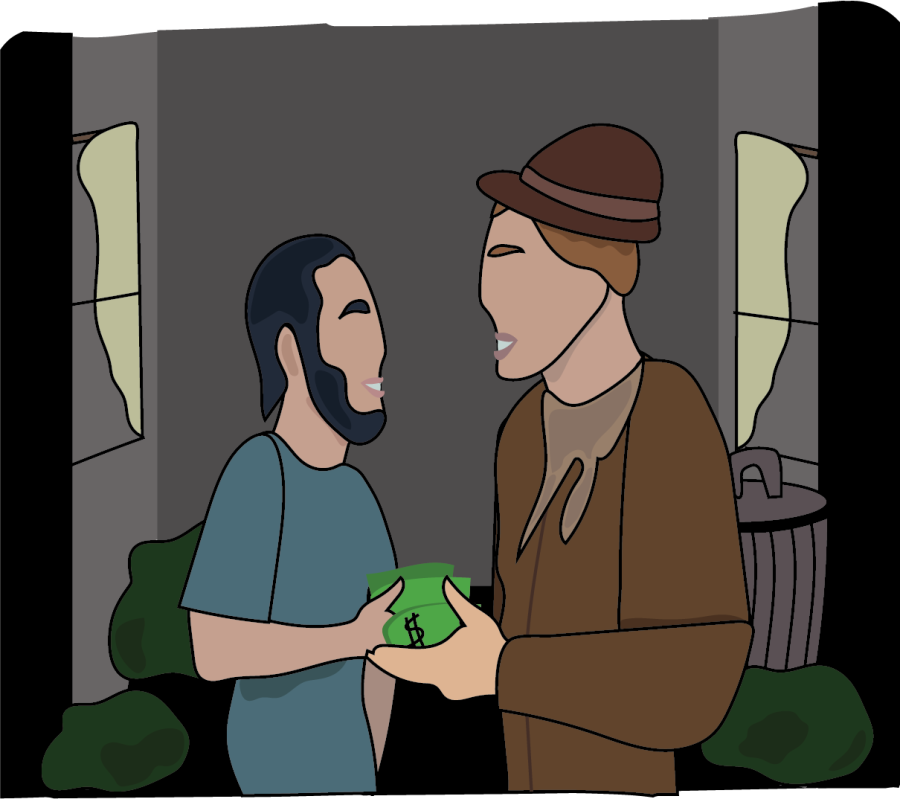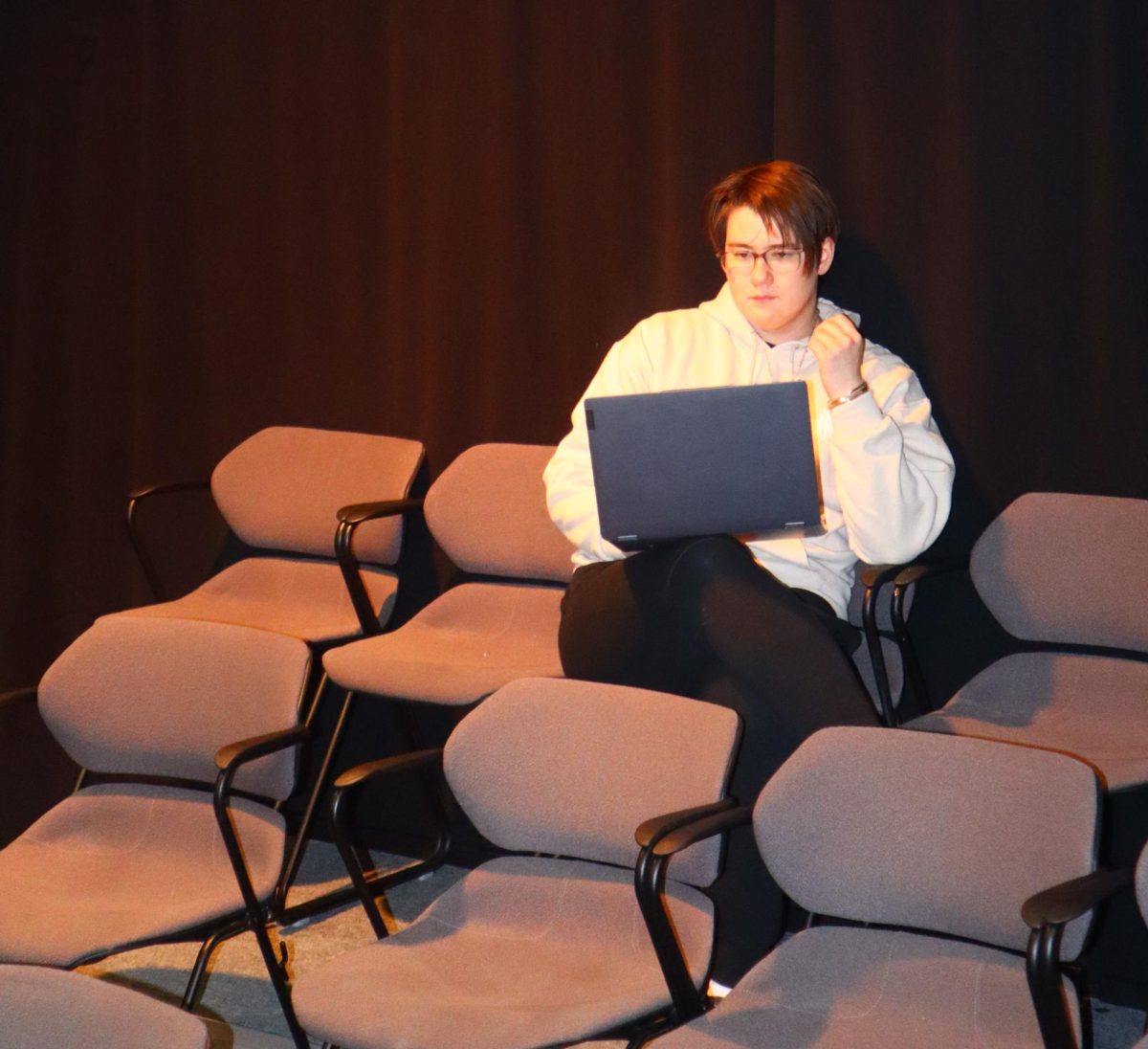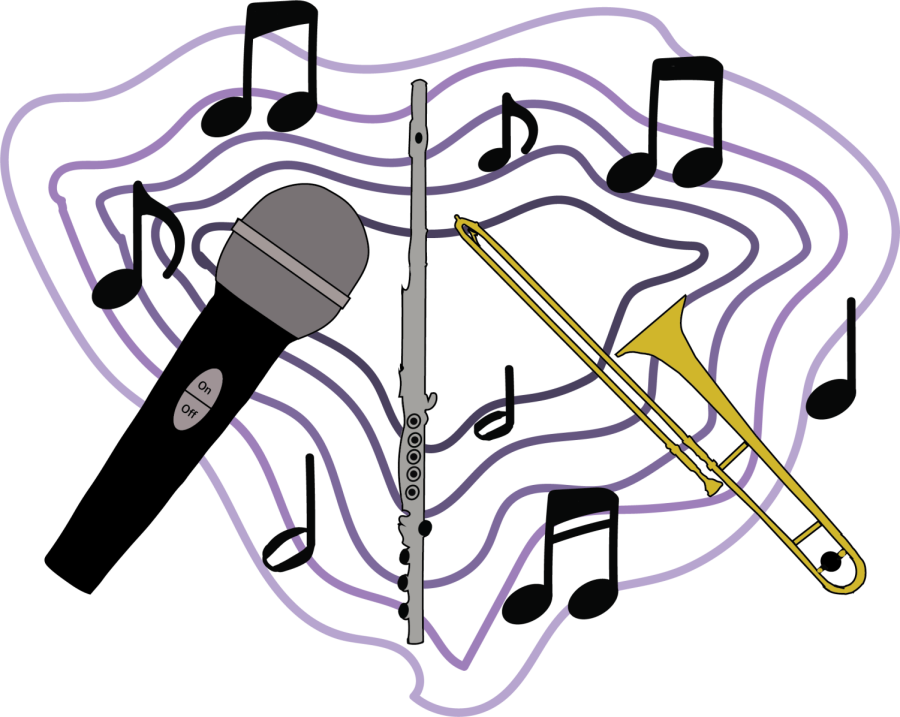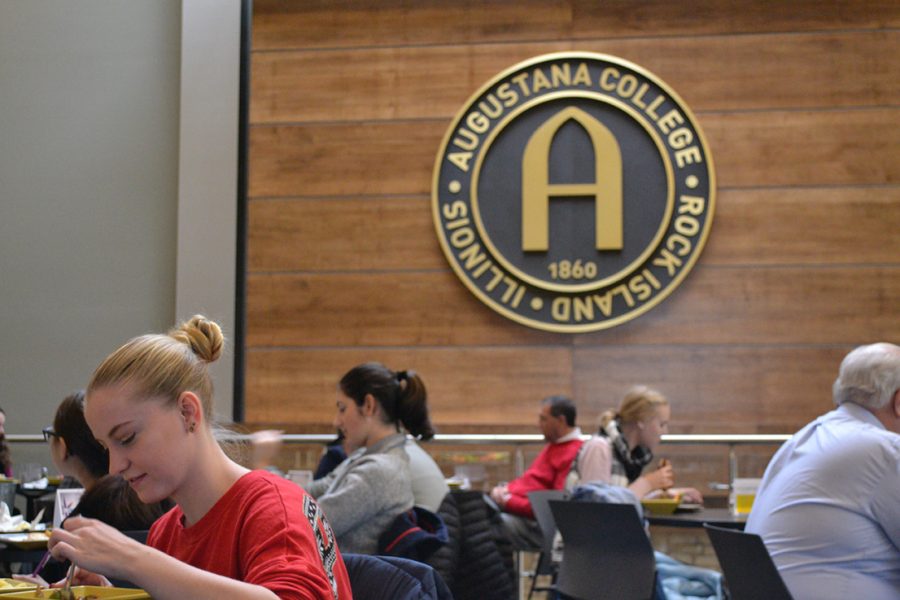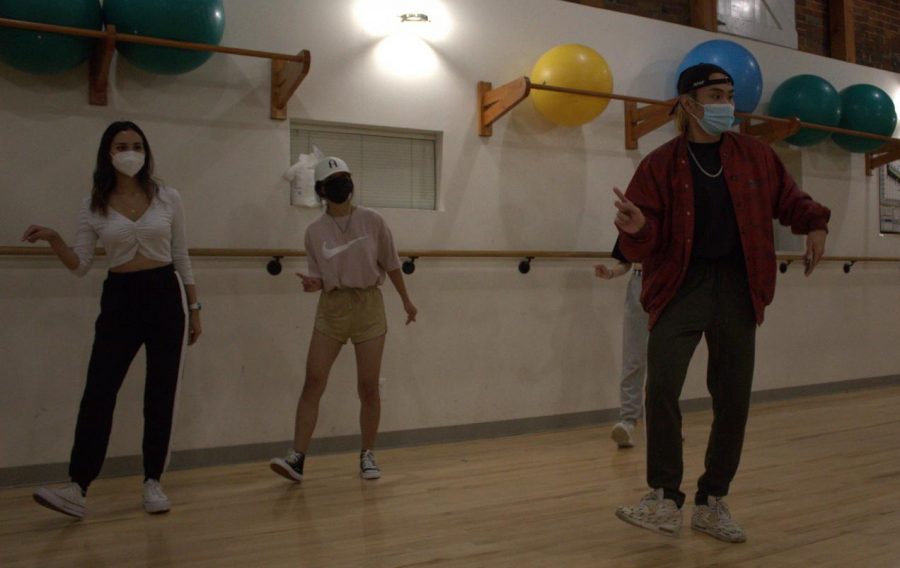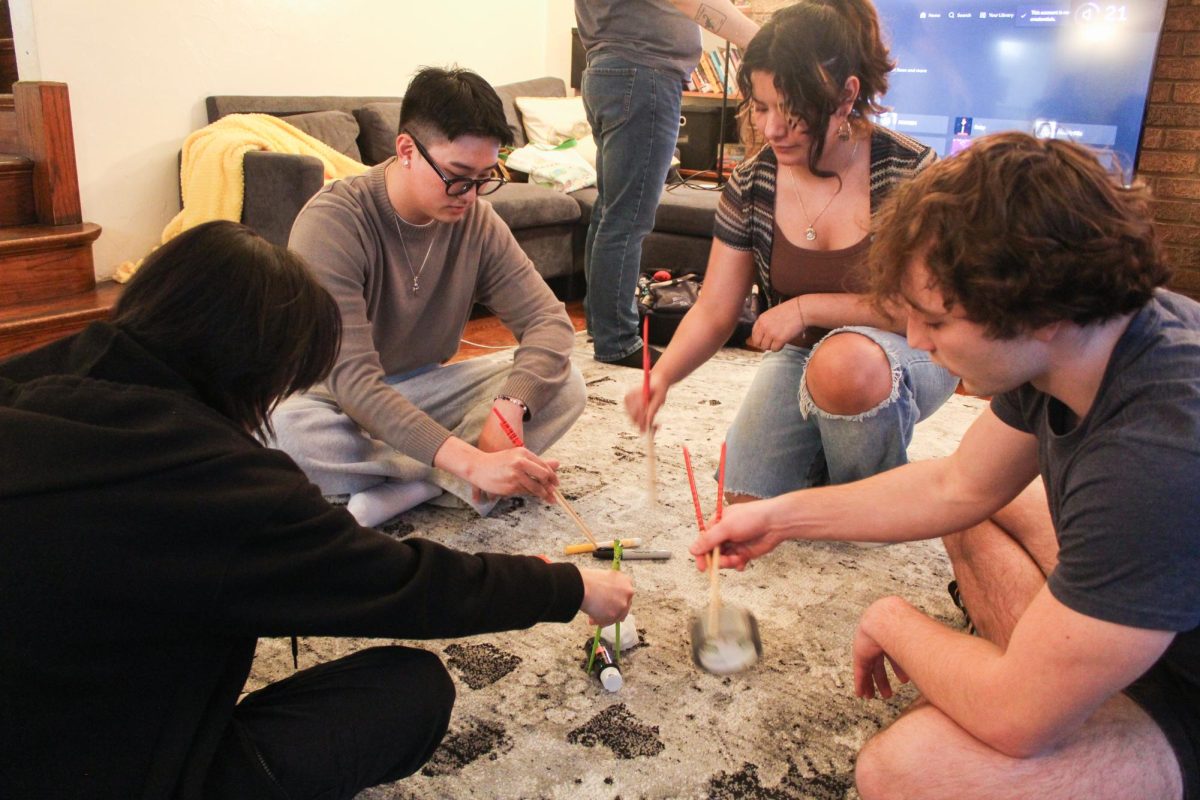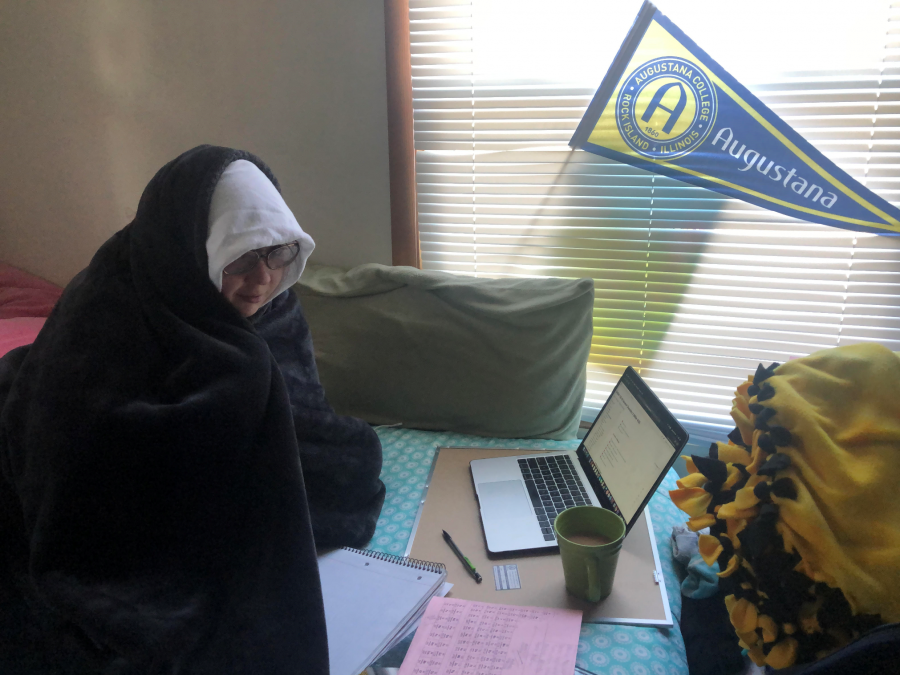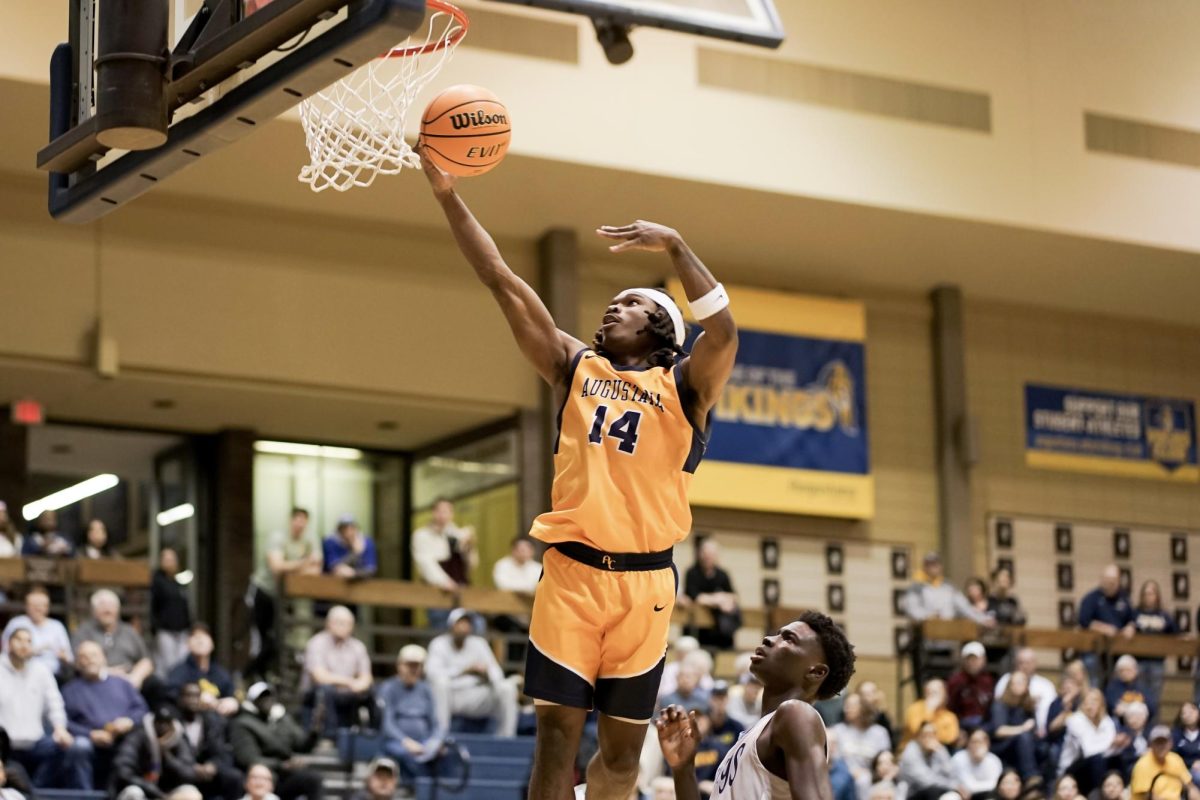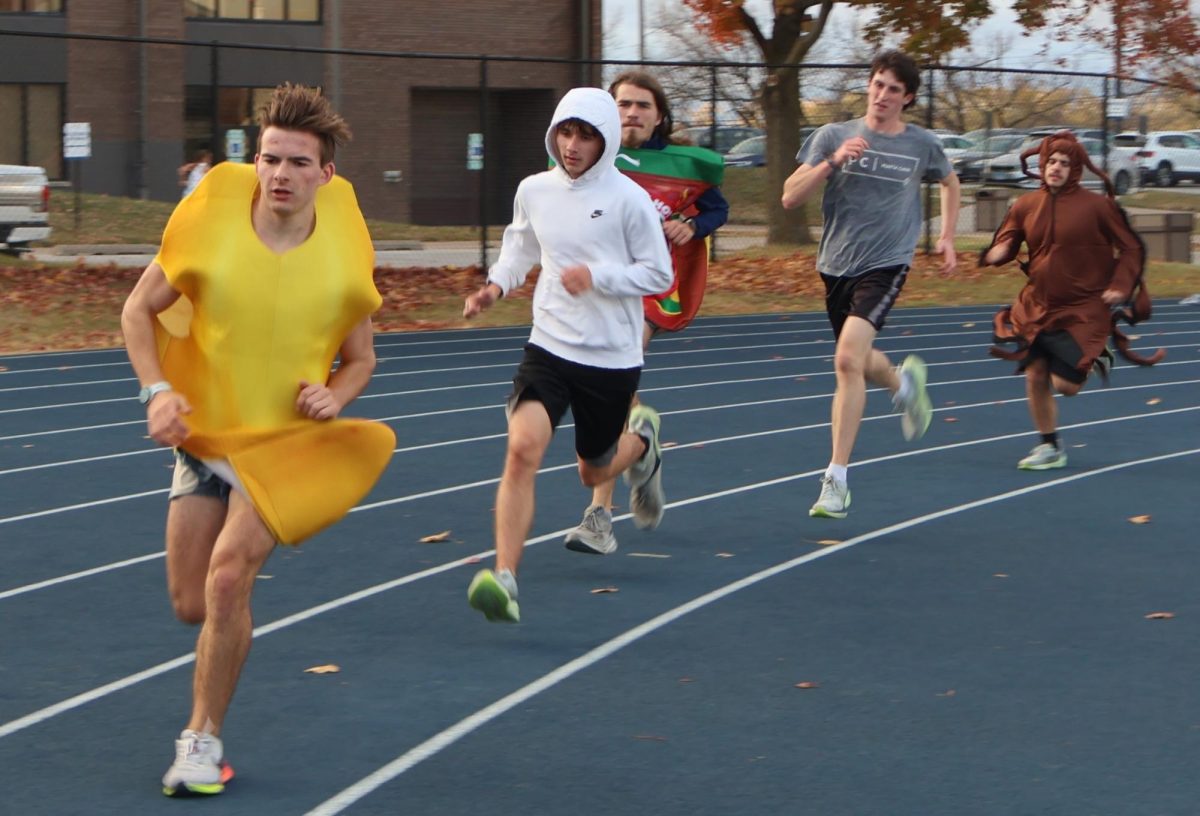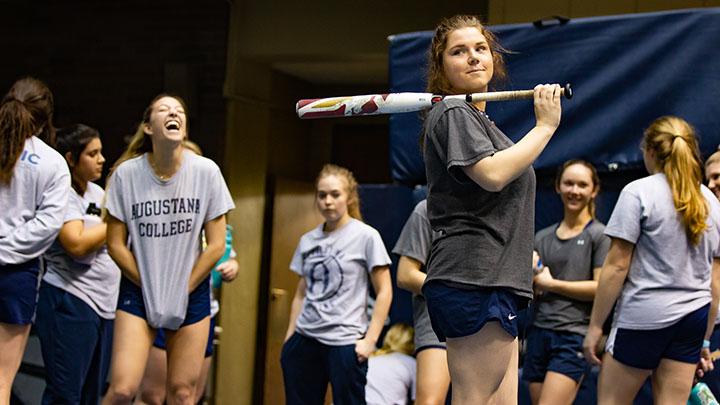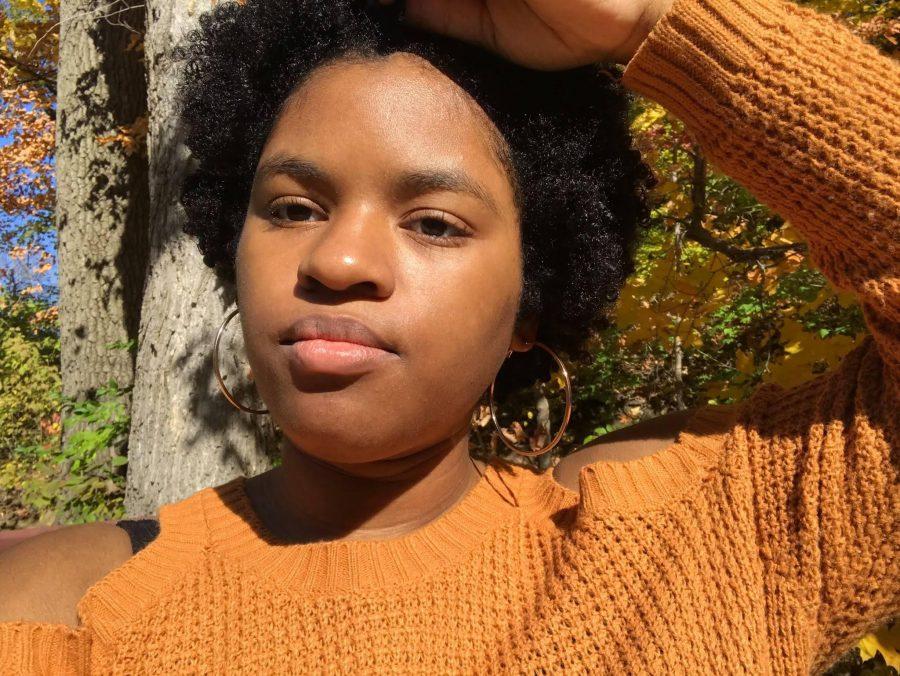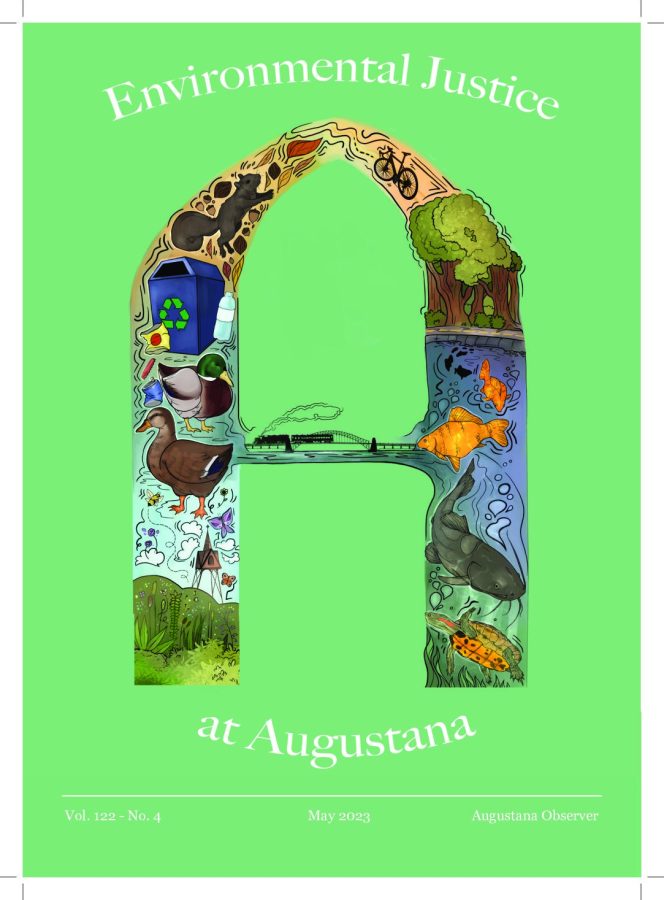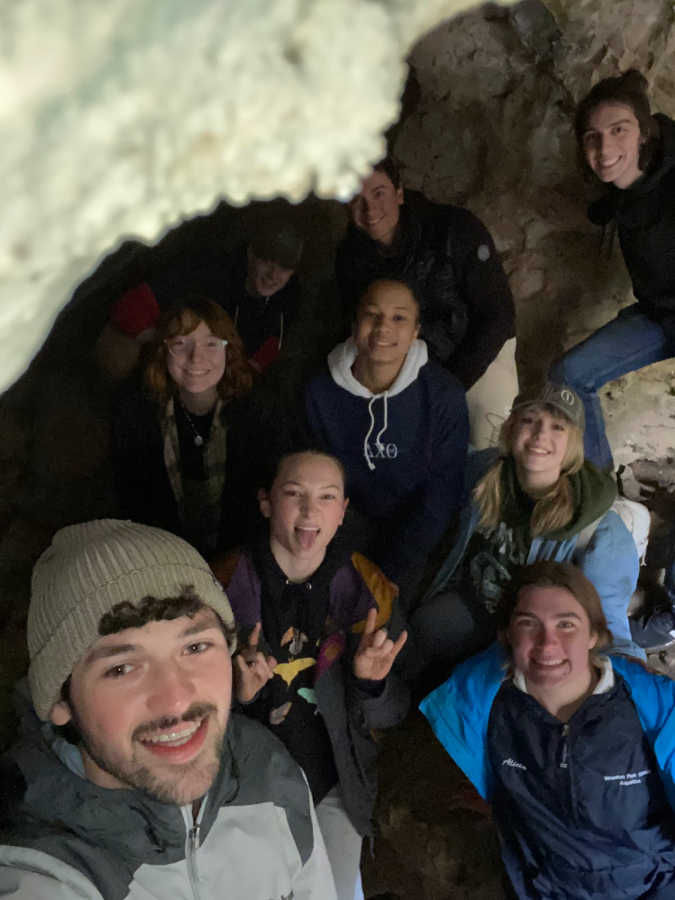Biodiversity is under threat
Chris Woods mows the lawn through the quad.
May 17, 2023
Invasive plants and animals have changed the biological diversity within Augustana College and the greater Quad Cities area in the last several years, according to Dr. Tierney Brosius, associate professor of biology.
10 years ago, giant ash trees could be seen all across campus. They were especially prevalent near the lacrosse fields. Today, they are gone due to the emerald ash borer, an invasive beetle that feeds on ash trees.
Since Augustana’s beginning, the college maintained a count of different ladybug species, with roughly 20 ladybugs in the collection, according to Brosius. However, in a recent count only 12 species were found, with two invasive species contributing to the decline of six of the native species.
Junior Jack Hughes worked with Brosius over the summer of 2021 and conducted research in the Quad Cities area on population counts of Coccinellid beetles, better known as ladybugs.
Hughes found that an invasive species, like Harmonia axyridis, is better at surviving than some of the less predatory and native species.
“The Coleomegilla maculata literally looks like it’s covered in hearts. And it’s like half the size of the Harmonia axyridis. That guy is just not as scary,” Hughes said. “Now you have species like Harmonia axyridis outcompeting these native species, because they can survive in more urban landscapes and the fact that they’re just a more successful predator.”
Although to many, the disappearance of ash trees and ladybugs around campus may not seem alarming, Brosius says this has been an emerging pattern for several different species around the world.
“If you spend some time looking online, there’s been a lot of articles published about the decline of insects overall. And that’s been kind of a global phenomenon that we’re actually seeing. And in some ways, people are saying these are kind of warning bells. We’ve seen this huge decline in insects that provide basic ecological services,” Brosius said.
Around the Slough, there has also been a growing population of non-native plant species.
Dr. Jason Koontz, professor of biology, says the three main invasive plant species on the Slough are bush honeysuckle, garlic mustard and tree of heaven. Bush honeysuckle in particular is an issue, according to Koontz because it grows earlier than most plants.
“In this part of Illinois and our forests, the diversity of plants is actually in the herbaceous ground layer,” Koontz said. “So all the spring wildflowers and things that basically come up, do their thing and then go dormant, it impacts them because they no longer have access to the sun early in the season, when all the trees haven’t leafed out yet.”
To combat invasive species growth, and encourage native species takes continuous time and money, so, Augustana’s grounds crew has had to be creative with maintaining a more natural ecosystem, according to Brosius.
“Pollinator Pockets was started by a student,” Brosius said. “The student worked really closely with grounds and I think that was important because she was aware of what systems we had at the college, knew what the financial realities were but they were able to find a middle ground where it was saving grounds man hours in order to not have to mow.”
In the past, Greek groups and other clubs on campus participated in garlic mustard pulls, to help combat the large population of this invasive species, according to Koontz.
Despite the work Augustana’s campus does to maintain native species growth, there are several different ways that more could be done.
“The management that we really need to do on campus is to introduce fire into the disturbance regime, which on an urban campus like this, is very difficult. And there’s a lot of red tape that you have to go through with the state, EPA and the city of Rock Island. You have to get a lot of ducks in a row in order for a prescribed burn to happen,” Koontz said.
Another barrier in the way of executing a prescribed burn, according to Koontz, is time management. Augustana would have to hold a burn every three to five years. Additionally, the burn would have to occur around the powerlines on campus.
A simpler way to ensure the growth of native species is to strategically plan for which native and which non-native species are being introduced to campus.
“It’s important to prioritize native species or showy species that don’t have any risk of spreading. You’re not gonna have an outbreak of petunias across campus or anything. That’s a tropical plant that as soon as it freezes, they’re dead,” Brosius said.
Unlike petunias, the Harmonia axyridis is more likely to thrive in uncertain conditions. According to Hughes, this presents a problem when farmers continue to introduce them to their crops to defend against other insects.
“The thing is too is that farmers could just buy another ladybug, and that ladybug would still eat their aphids, but again, this one reproduces a lot quicker, and is significantly more predatory. And it’s hard to get a selling point on other species,” Hughes said.
According to Brosius, invasive species are one of the main reasons for habitat destruction and extinction of species, yet there might come a day when invasive species are necessary to live with.
In a world that faces a future with a different climate, and a native species that is unable to survive in harsher conditions, accepting and living with invasive species may be necessary.
“Some people talk about climate change happening, and that these invasive species seem like they’re awful, because it causes so much disruption at some level with rapid ecosystem shifts. But maybe we need these generalists to keep some functioning ecosystems available,” Brosius said.
In a similar vein of thought, Koontz recently taught a class on conservation biology. After educating himself on how indigenous people look at invasive species, Koontz wonders if it may be better to live with invasive species, rather than work against them.
“Indigenous people view invasive species as they are displaced, just like they are displaced. And so you actually need to treat them with respect and understand, they’re just living their lives. They didn’t come here by their own choice,” Koontz said.
Currently, Augustana seems to be moving towards a path of both accepting the invasive species in the environment as well as working towards embracing a culture of leaving native species as they are.
There is an approved list of species that are allowed to be planted on Augustana’s campus. This measure helps to ensure only native species, and non-aggressive invasive species are planted.
“Native species aren’t as flashy or showy, and in some people’s minds as beautiful, but I think that we’re undergoing a bit of a cultural shift, that people are starting to understand why we’re leaving native species,” Brosius said.
To further educate yourself on these issues, and become more aware of the native and non-native species around you, Hughes recommends the app iNaturalist.
“The biggest thing that I think is helpful to a lot of people is just being aware of these things,” Hughes said. “I think that it allows for a lot of people who wouldn’t have that understanding of the environment around them, to make those distinctions that can inevitably enable educated decisions to be made about how to manage species assemblages in people’s communities.”





